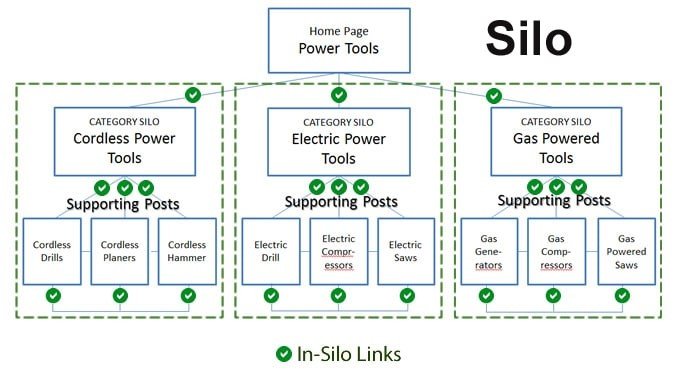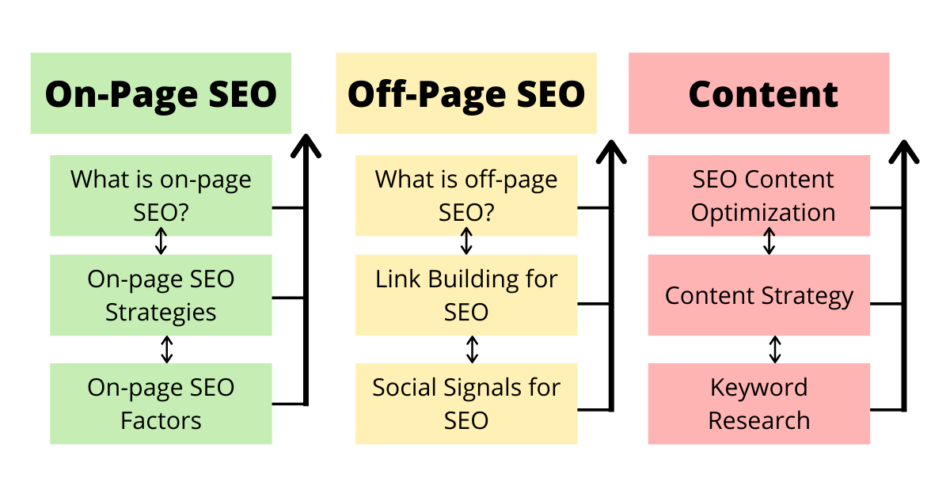In the world of website organization and structure, a SILO structure refers to a method of categorizing and grouping content on a website in a hierarchical manner. It involves organizing related content into themed groups or “silos” to improve user experience and search engine optimization. Let’s break down the concept of a SILO structure in an easy way.
Imagine your website as a big library, and each floor of the library represents a category or theme. Within each floor, you have different sections representing subtopics or subcategories. This is similar to how a SILO structure works.
Here’s a simplified explanation of how a SILO structure can be implemented:

- Main Categories (Floors): Start by identifying the main categories or topics that your website covers. These could be broad themes that represent the primary areas of your content. For example, if your website is about gardening, your main categories could include “Flower Gardening,” “Vegetable Gardening,” and “Landscaping.”
- Subcategories (Sections): Once you have your main categories, break them down into more specific subcategories. These subcategories should be narrower topics that fall within the main categories. Using the gardening example, under the “Flower Gardening” category, you could have subcategories like “Rose Gardening,” “Perennial Flowers,” and “Container Gardening.”
- Content Organization: Now that you have your main categories and subcategories, it’s time to organize your content accordingly. Assign each piece of content (such as articles, blog posts, or pages) to the appropriate subcategory within the SILO structure. This ensures that related content is grouped together and easily accessible.
- Internal Linking: One essential aspect of a SILO structure is creating internal links between related content within the same SILO. This helps search engines understand the hierarchical relationship between your content and improves navigation for users. For example, within an article about rose gardening, you can include links to other articles within the “Flower Gardening” SILO, such as “Caring for Perennial Flowers” or “Choosing the Right Containers for Your Garden.”
Also read : Mastering Silo Structure: Elevate Your Website’s SEO and User Experience
By implementing a SILO structure, you make it easier for users to navigate your website, find relevant information, and improve search engine optimization. It also helps search engines better understand the organization of your content and its relevance to user queries.
Remember, the goal of a SILO structure is to create a logical and user-friendly website hierarchy. By organizing your content into themed groups and utilizing internal linking, you can enhance the overall user experience and make it easier for search engines to crawl and index your website.
So, think of your website as a well-structured library with clearly labeled floors and sections, guiding visitors to the information they seek. Implementing a SILO structure can contribute to a more organized and user-friendly website experience.



